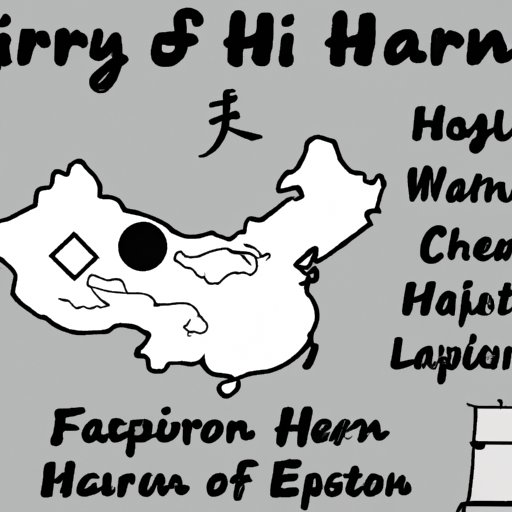Introduction
Understanding Japan’s invasion of China during the World War II era is crucial not only for comprehending history but also to grasp the present geopolitical situation in the region. The invasion remains a contentious issue between Japan and China, and it is important that we comprehend the root causes and the aftermath of the war in order to move forward. This article is an attempt to provide an in-depth analysis of the political motivations, impact, and lessons learned from Japan’s invasion of China.
Historical context and political motivations behind Japan’s invasion of China
Japan’s history of expansionism and colonial ambitions in Asia dates back to the late 19th century, when Japan first became a modernized industrial power. By the 1930s, Japan had conquered Korea, Taiwan, and Manchuria, but its thirst for power and resources continued. In July 1937, Japan launched a full-scale invasion of China, which became known as the Second Sino-Japanese War.
The political and economic factors that led to Japan’s decision to invade China were multifaceted. Japan was facing diminishing natural resources as a result of industrialization, and China was viewed as an attractive target because of its abundant resources, including coal and iron. Japan also saw itself as the leader of the Asian countries and believed that it was its responsibility to free Asia from Western colonialism.
Furthermore, Japan’s leaders believed that by occupying China, they could establish a buffer zone that would protect Japan from Soviet and American influence. The Japanese government also aimed to showcase its military power to the world, particularly Western powers who viewed Japan as an inferior power.
Impact of Japanese imperialism on Chinese society and culture during the invasion
Japan’s invasion of China was a brutal and destructive conflict that had a severe impact on Chinese society and culture. According to some estimates, the war resulted in the deaths of over 14 million Chinese civilians and soldiers.
During the invasion, Japan implemented a policy called the “Three Alls” policy, which encouraged soldiers to “kill all, burn all, loot all.” The policy resulted in widespread atrocities and destruction of civilian infrastructure such as homes, hospitals, and schools. Many cities such as Nanjing were infamously razed to the ground, with the Japanese army committing mass atrocities such as rape and murder against Chinese civilians.
The impact on Chinese society and culture was catastrophic. Those who survived the conflict often suffered the loss of loved ones, faced displacement, and endured severe poverty, hunger, disease, and cultural destruction. The war also caused tremendous political instability and economic disruption in China that lasted for decades after the conflict ended.
Role played by key historical figures in the lead up to the invasion and during the conflict
The conflict was fueled by the actions and decisions of key Japanese and Chinese leaders. Japanese leaders, such as Prime Minister Konoe Fumimaro and War Minister Tōjō Hideki, pushed for the invasion as a way to expand Japan’s power in Asia.
In contrast, Chinese Leader Chiang Kai-shek, who was already plagued by political and social unrest, attempted to resist the Japanese invasion by relying on the Chinese army. However, his leadership and strategy came under question, with some accusing him of not doing enough to stop the Japanese. Other Chinese leaders, such as Mao Zedong, led the resistance against the Japanese army and played a critical role in the eventual defeat of Japan.
Consequences of the invasion for both Japan and China
Japan’s defeat in the Second Sino-Japanese War marked a turning point in the country’s history, leading to its eventual surrender during World War II. The aftermath of the war significantly impacted East Asian geopolitics, leading to tensions between Japan and China that persist to this day.
Furthermore, the invasion caused significant long-term effects on China’s political and economic stability that are still felt today. The conflict significantly weakened the Chinese government and led to the eventual rise of the Communist Party to power.
Lessons learned and current relevance
The invasion of China teaches us many lessons about the importance of diplomacy, conflict resolution, and the consequences of military aggression. The war’s atrocities show the dangers of extreme nationalism and militarization, as well as how political instability and economic insecurity can be the root causes of many conflicts. It is important to study and learn from this historical event to inform our approach to contemporary global conflicts and security issues.
Conclusion
Japan’s invasion of China remains a significant historical event that has shaped the modern geopolitical landscape of East Asia. The invasion led to the deaths of millions of people, the destruction of Chinese culture and society, and ongoing tensions between Japan and China. However, this event also provides crucial lessons that can guide our approach to contemporary global conflicts and security issues, emphasizing the importance of diplomacy, conflict resolution, and the avoidance of militarization and extreme nationalism. By studying and learning from the lessons of history, we increase our chances of building a more peaceful and sustainable future.
